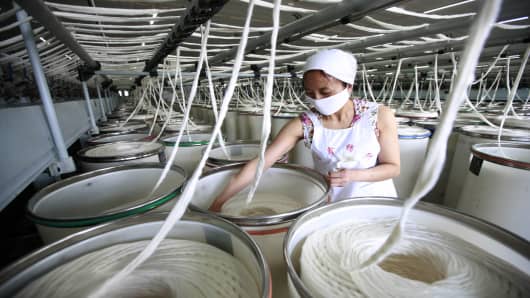China's relatively benign manufacturing data triggered little reaction from Asian markets on Wednesday, but analysts said the real story was the substantial fall in new factory orders, which they believe has the potential to trigger stimulus action from the government.
China's official Purchasing Managers' Index (PMI) for April dipped to 50.6 from a March figure of 50.9, according to data from the National Bureau of Statistics, missing a Reuters forecast of 51.0. A figure above 50 indicates expansion, while sub-50 number shows contraction.
(Read More: China Factory PMI Raises Doubts About Economy's Strength)
The surprise fall didn't alarm the market watchers CNBC spoke to, but they expressed concerns over a sub-index measuring new orders, which fell from 51.7 in April to 52.3 in March, its lowest level since January.
"The headline figure was pretty much the same as March, but that is not the main story," said Alistair Chan, economist at Moody's Analytics. "The biggest surprise drop was in new export orders which showed a lot of manufacturers are experiencing a slowing in export sales."
Chan said the upshot was that China's government was now more likely to implement stimulus measures, which could lead to a bounce in China's economy late this year.
Evan Lucas, market strategist at IG Markets, said the dip in the new orders suggested that China still faces headwinds from Europe's debt crisis.
(Read More: Why China Market Bulls Aren't Surrendering)
"It is another bit of skepticism on Chinese growth. The drop in new orders... reflects the softness coming from China's biggest trading partner Europe," he said.
"This could probably increase the likelihood that China will stimulate, which could explain why the Australian dollar traded slightly up following the announcement," he said. The Australia dollar is especially sensitive to economic data from China, its biggest export market.




